The DART impact into asteroid moon Dimorphos wowed astronomers with an unexpectedly dramatic plume.
Updates:
October 11, 2022: Additional photos have become available with NASA's announcement of a wildly successful test that shortened the orbit of the asteroidal moon.
October 3, 2022: Scroll down to see a new image from the Southern Astrophysical Research (SOAR) Telescope in Chile showing the more than 10,000-kilometer-long debris pluming from the impact site. Find more details in NSF's NOIRLab press release.
September 29, 2022: Scroll down to see newly released images from the Hubble and Webb Space Telescopes.
NASA / Johns Hopkins APL
Yesterday, as NASA’s DART spacecraft sped toward its inevitable demise against the blocky surface of Dimorphos, most space fans’ eyes were on the NASA Television feed of DART spacecraft photos, streamed to Earth at a rate of one per second. Dimorphos and its larger companion Didymos resolved into worlds with fascinating surfaces covered with gullies and angular blocks. Then, this morning, the Italian Space Agency shared the first photos from DART’s companion LICIAcube minisatellite: before-and-after images of the impact crash.
But DART and LICIAcube weren’t the only cameras watching the impact. Around the world, astronomers pointed telescopes at the pinpoint of light from the Didymos system, hoping to catch an impact flash. “What we should see with telescopes on the ground is a dot in the sky that should, suddenly, increase in brightness,” the European Space Agency (ESA) predicted in a pre-impact press release about the ground-based observing campaign. Their hopes were rewarded — and then some.
DART Impact from the Ground
Professionals and amateurs alike were wowed by the dramatic effects of the tiny spacecraft’s crash into the asteroid moon. Not only did the pointlike light from the Didymos system brighten; as astronomers watched, the system shed a crescent-shaped plume of dust, brilliantly illuminated by sunlight. The visible plume didn’t last long, spreading out into invisibility, but the stunning view was captured from numerous locations.
ESA’s Le Makes Observatory in Le Reunion obtained one view of the expanding crescent, but the best images so far came from the Hawai`i-based ATLAS (the Asteroid Terrestrial-impact Last Alert System). Designed to be an early-warning system for near-Earth asteroids approaching Earth, ATLAS scans the entire sky several times a night. Its view of the impact shows the effects in breathtaking detail. At least two separate plumes are visible: one, crescent-shaped, spreads out in the direction opposite to the impact, while another, fainter one jets at an angle behind Didymos’ apparent motion across the sky.

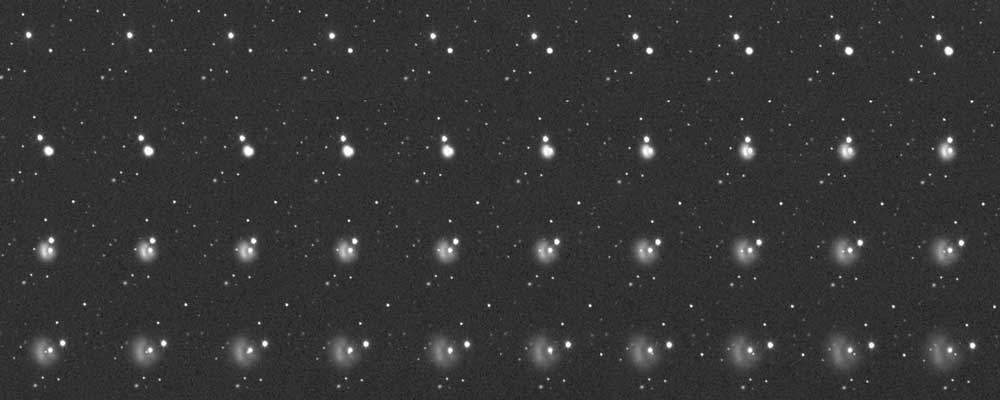
Images: ATLAS Project (University of Hawai`i / NASA); Image processing: Emily Lakdawalla.
Although not as finely detailed, a similar view from the South African Astronomical Observatory’s Lesedi telescope provides long parallax and thus an opportunity for astronomers to study the evolution of the plume in stereo.

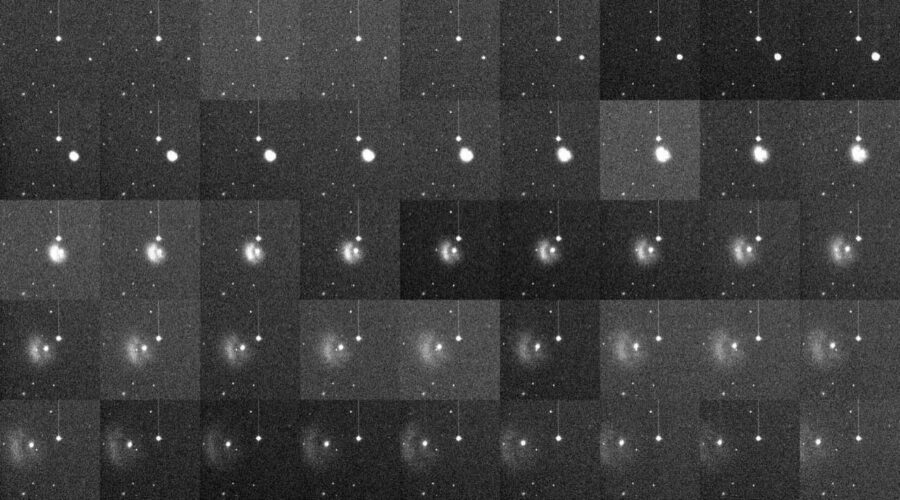
Other ground-based telescopes that captured the impact and shared preliminary versions of their images via Twitter include:
- E. Guido, M. Rocchetto, G. Savini, and S. Fossey at Telescope Live Observatory
- Gianluca Masi and Berto Monard in a collaboration between the Virtual Telescope Project and the Klein Karoo Observatory in Calitzdorp, South Africa
- Tim Lister using a 1-meter telescope operated by Las Cumbres Observatory at SAAO
- Franck Marchis using a Unistellar scope at Reunion Island
- The Turkana Basin Institute’s portable DART – OPTik telescope in northern Kenya
- Eran Ofek and David Polishook from an 11-inch telescope in Israel (a surprisingly good view from such a small telescope!)
- Yücel Kılıç observed the DART mission impact moment from TÜBİTAK National Observatory, Turkey, with a 12-cm telescope and created an animation from the resulting images.
In addition, many telescopes were performing spectral observations in order to study the composition of the plume. Those results must await calibration, but it looks like the Infrared Telescope Facility in Hawai`i obtained good data!
Two days after the impact, the Southern Astrophysical Research (SOAR) Telescope in Chile obtained an image of the impact, showing a debris tail more than 10,000 kilometers (6,200 miles) long:
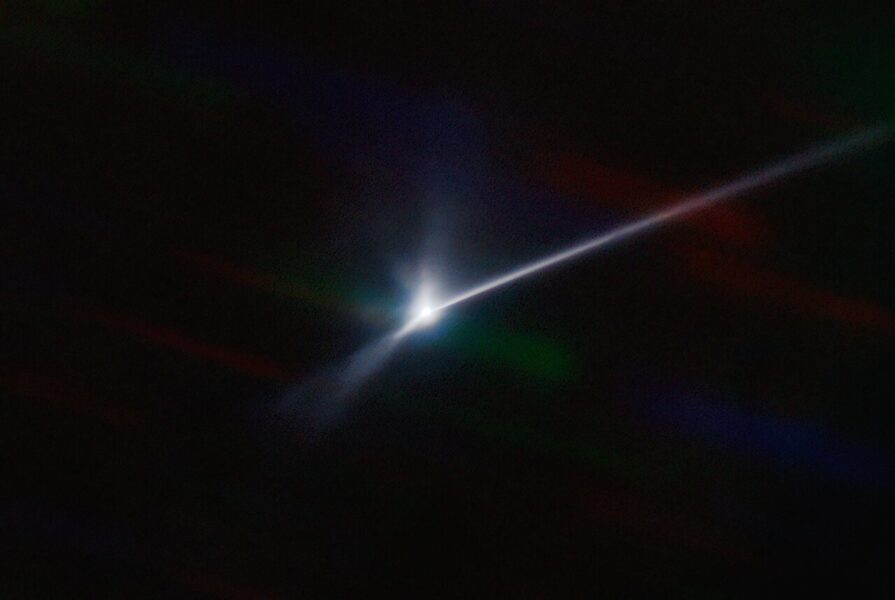
CTIO / NOIRLab / SOAR / NSF / AURA / T. Kareta (Lowell Observatory), M. Knight (US Naval Academy); Image processing: T.A. Rector (University of Alaska Anchorage / NSF’s NOIRLab), M. Zamani & D. de Martin (NSF’s NOIRLab)
DART Impact From Space
In space, both the Hubble and James Webb Space Telescopes were observing, as was the Lucy mission. NASA has now released images from both space telescopes, though no word yet from Lucy.
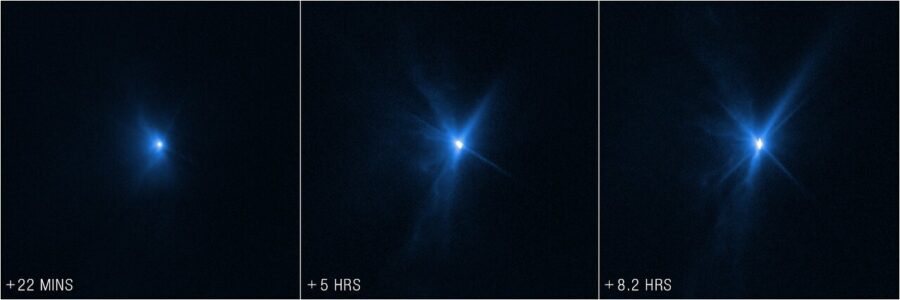
NASA, ESA, and STScI
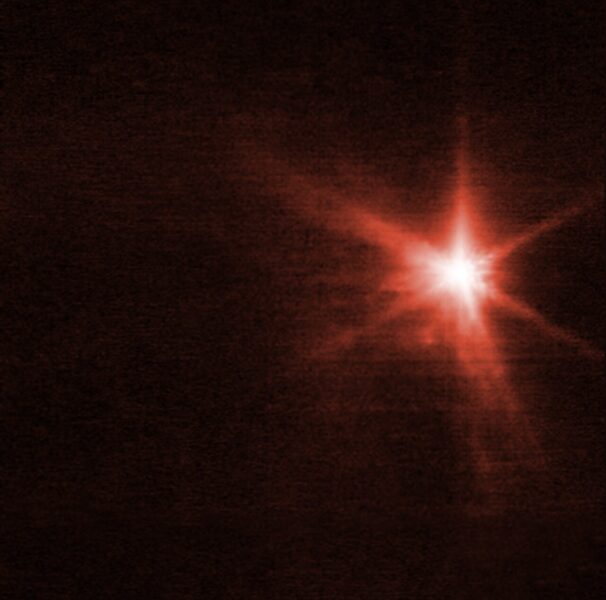
NASA, ESA, CSA, and STScI
The Hubble observations, when combined with Webb data, will provide information about the nature of the surface of Dimorphos, how much material was ejected by the collision, how fast it was ejected, and the distribution of particle sizes in the expanding dust cloud. Hubble will observe Dimorphos 10 more times over the next three weeks to monitor the ejecta cloud as expands and fades. Webb will also continue to observe the system.
And then there are the DART and LICIAcube images: DART revealed Didymos to be smooth in some places, gullied in others. The smoothly bulging equator is reminiscent of Bennu, the asteroid visited by NASA’s OSIRIS-Rex mission, while the gullies look like those on Saturn’s moon Helene. Dimorphos is extremely blocky, like all near-Earth asteroids seen in such detail: Bennu, Itokawa, and Ryugu.
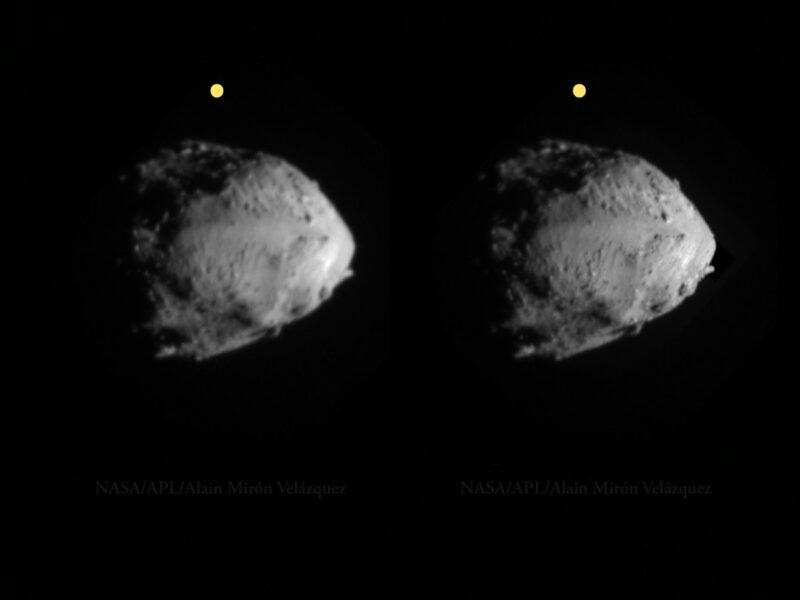
NASA / JHUAPL / Alain Mir
And these are the views the Italian Space Agency released from LICIAcube this morning, taken before the spacecraft’s close (55-kilometer) flyby of Didymos. The photos show a streaky plume expanding in all directions from the CubeSat’s point of view:
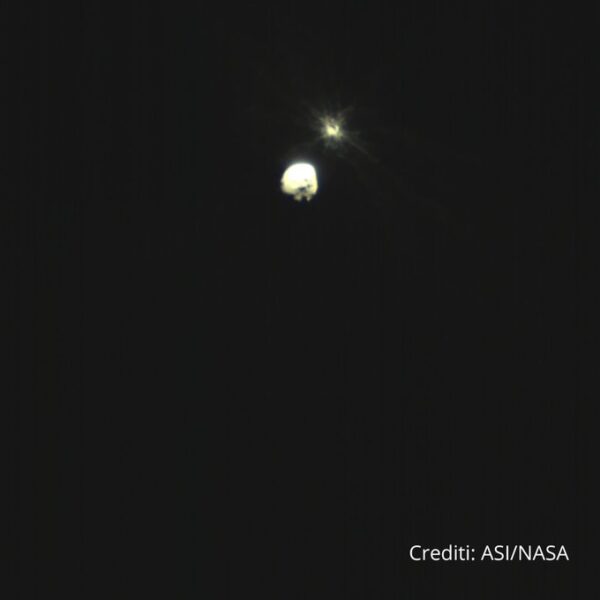
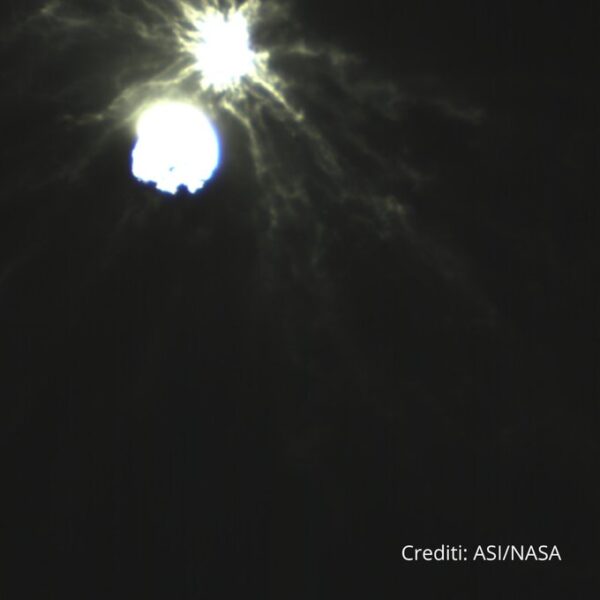
Hundreds more images await download from LICIAcube, and we have yet to see photos from Hubble and Lucy. Professional study of these many images will enable astronomers to generate 4D models of the plume evolving over time and space. A special session at December’s American Geophysical Union meeting will feature the early results from this research, so stay tuned for science!
 3
3









Comments
David-Stoltzmann
September 30, 2022 at 8:14 pm
The stereo-pair 3D images DO NOT want the eyes to be "crossed" to view the stereo. Keep your eyes uncrossed and then the 3D will stand out correctly.
You must be logged in to post a comment.
Michal
October 1, 2022 at 9:34 am
I believe you need to slightly "cross eyes" until you see three images. The center image will be the merged 3-D image. The effect is subtle, not especially pronounced.
You must be logged in to post a comment.
David-Stoltzmann
October 1, 2022 at 10:39 am
The LEFT Eye stays looking at the LEFT yellow dot, and the RIGHT Eye stays looking at the RIGHT yellow dot. This is normal vision, not cross-eyed. With the somewhat wide separation of the two yellow dots, it takes a bit of relaxation of the eyes to achieve this overlap for stereo viewing. You are correct that the 3D is subtle, compared to most stereo-pairs.
You must be logged in to post a comment.
You must be logged in to post a comment.